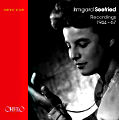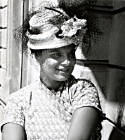ORFEO International – Reviews
Important Releases Briefly Introduced
October 2013
ORFEO 4 CD C 877 134 I
Irmgard Seefried - Recordings 1944-67
Although we shall already be commemorating the 25th anniversary of the death of Irmgard Seefried on 23 November 2013, this soprano’s magnificent artistry as demonstrated on the operatic stage, in the concert hall and in the genre of the lied is still remembered well by music-lovers today. She came originally from Swabia, and after making her stage debut in Aachen (where she worked for the first time with Herbert von Karajan) she moved to the Vienna State Opera in 1943 and remained attached to the house for more than thirty years. 
C 877 134 IShe developed into one of the most important singers of her time, especially in the Mozart repertoire. Her performances and recordings as Pamina in the Zauberflöte, Susanna in Le nozze di Figaro and Fiordiligi in Così fan tutte under conductors such as Karl Böhm and Joseph Krips made her into a role model for the generations after her. 
Irmgard Seefried, ca. 1949
Foto: Private archive Gottfried KrausExcerpts from these roles can be heard in this anniversary box from Orfeo. Many recordings by Irmgard Seefried that were hitherto unavailable, or available only in poor copies on the grey market, have here been rigorously restored. Our collection begins in the year 1944 and features excerpts from well-known radio productions under Karl Böhm (Mozart’s Zauberflöte, Beethoven’s Fidelio, Wagner’s Meistersinger and Strauss’s Ariadne auf Naxos) alongside other, less well-known recordings of individual arias by Haydn, Weber and Puccini under the baton of Leopold Ludwig. Her Mozart performances – which took her all over the globe – are documented here with various conductors including Ernest Ansermet, Wilhelm Furtwängler and Bruno Walter. Besides her star roles mentioned above we find works here such as the motet Exsultate, jubilate and the aria Non temer, amato bene, in which her husband Wolfgang Schneiderhan took on the violin solo part, as he often did during those years when Seefried was at the height of her career. Naturally, a homage to Irmgard Seefried cannot omit her song repertoire. This is documented here by a selection of radio recordings from the 1950s and ’60s. Whether in songs by Haydn and Mozart or by Schubert, Schumann and Brahms, her diction is always remarkable. Furthermore, her musical approach was thoroughly natural (in the best sense of the word) and this always allowed Seefried to establish a direct connection with her audience. This is especially the case for the programme chosen for the last CD in our new anthology, which at first glance seems a little odd: Mussorgsky’s Nursery songs, recorded in 1958 with her “constant” accompanist Erik Werba, and Chansons from three centuries, a German Radio broadcast from 1967. These add new, fascinating aspects to round off Irmgard Seefried’s artistic profile.
top |